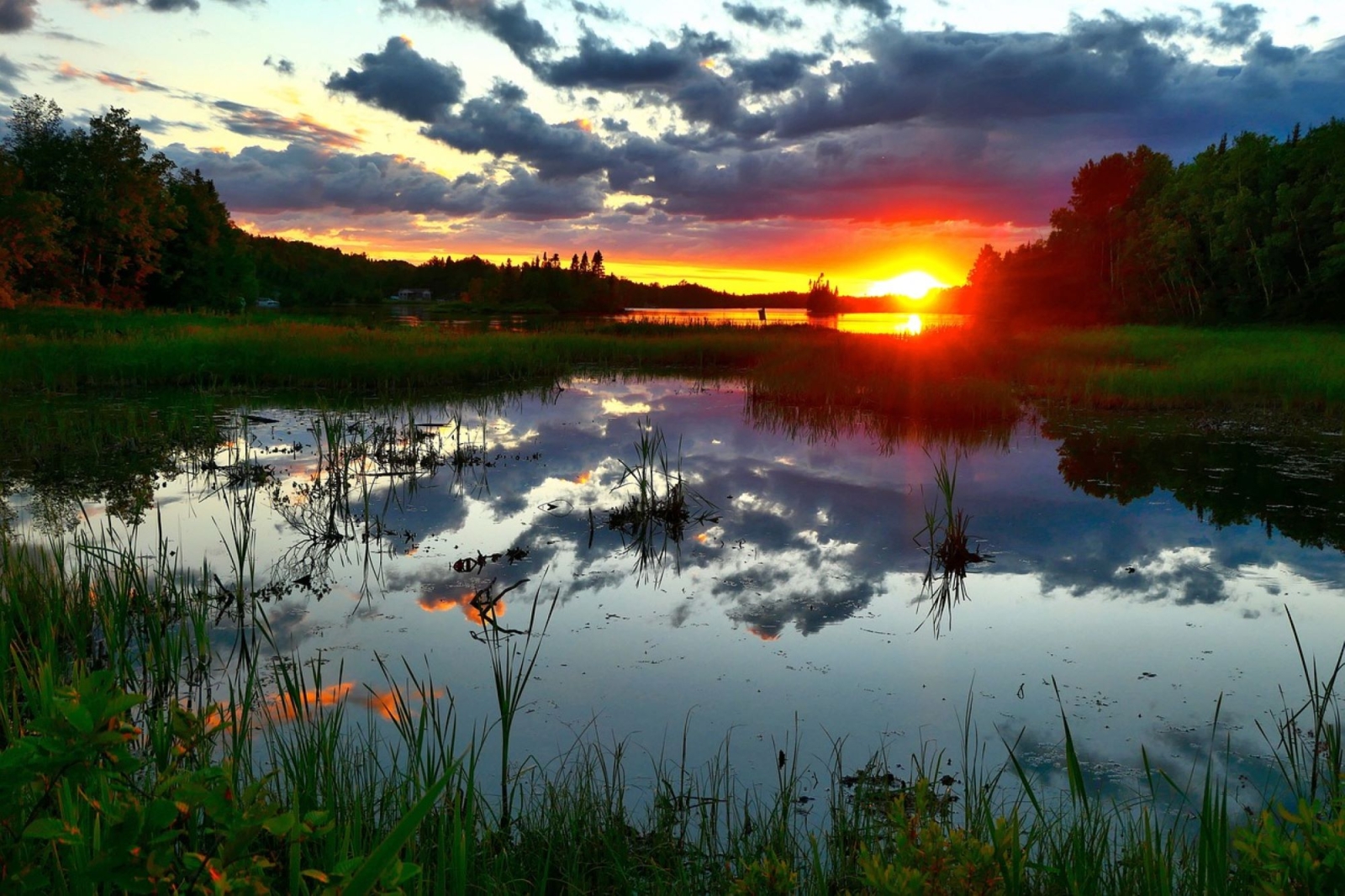Late in the evening of Thursday, November 9, 2023, negotiators from the Parliament, Commission and Council reached a tentative political agreement on the European law on nature restoration. After a long debate and numerous consultations, the EU countries agreed on the new Nature Restoration Law.
What the Nature Restoration Law stipulates
The Trilogue – the European Commission, the Council of the European Union, and the European Parliament – have, therefore, agreed on the final text of the Nature Restoration Law, now to be submitted for ratification and final votes by member states, the Environment Committee, and the Parliament in Strasbourg. The co-legislators agreed on an EU goal of restoring at least 20 percent of terrestrial areas and 20 percent of marine areas by 2030 and all ecosystems in need of restoration by 2050. To achieve these goals, EU countries must restore at least 30 percent of the habitat types covered by the new law to good condition by 2030, increasing the percentage progressively, to 60 percent by 2040 and 90 percent by 2050.
Member states will have to adopt, through an open, transparent and inclusive process, national restoration plans detailing how they intend to achieve these goals. They will have to prioritize Natura 2000 sites until 2030 and, once an area has achieved good condition, aim to ensure that it does not significantly deteriorate.
What's changing for soils and the agricultural sector
To restore nature in land used by the agricultural sector, EU countries will need to put in place measures to achieve by the end of 2030, and every six years thereafter, a positive trend in two of the three identified indicators. These will be: the butterfly index in grasslands, the share of agricultural land with high biodiversity landscape features, and the storage of organic carbon in cultivated mineral soils.
The restoration of drained peatlands is one of the most cost-effective measures to reduce agricultural emissions and improve biodiversity. EU countries must therefore implement measures to restore organic soils for agricultural use that constitute drained peatlands on at least 30 percent of these areas by 2030 (at least one-quarter must be rewetted); 40 percent by 2040 (at least one-third must be rewetted); and finally 50 percent by 2050 (at least one-third must be rewetted). Rewetting, however, will remain voluntary for farmers and private landowners.
EU countries must also reverse the decline in pollinator populations by 2030 at the latest and achieve a positive trend in that direction thereafter, which will be measured at least every six years.
Forests, rivers and urban ecosystems
By 2030, EU countries will have to achieve a positive trend in several indicators in forest ecosystems, plant an additional 3 billion trees in the European territory and restore at least 25,000 km of rivers to their natural course.
Member states will also have to ensure that by 2030 there is no net loss of the total national area of urban green space and urban tree cover in urban ecosystem areas compared to 2021. After 2030 they will have to increase these spaces, and again the programs will have to be measured every six years.
An emergency brake
Within one year of the Restoration Law coming into force, the Commission will have to assess the gap between the financial needs for restoration and available EU funding and possibly explore solutions to close it.
The negotiators also agreed on an emergency brake so that targets for agricultural ecosystems can be suspended in exceptional circumstances if they create serious consequences for the availability of land needed to ensure sufficient agricultural production for EU food consumption.
Reactions to the Restoration Law
After the agreement, Spanish rapporteur César Luena, a member of the Spanish Socialist Workers Party (PSOE), expressed satisfaction because “the agreement reached is a significant collective moment. 70 years after the European project began, a European law for nature restoration is needed to address biodiversity loss.”
LIPU, the Italian League for the Protection of Birds, is also positive: “For European biodiversity, a season can really begin in which we truly protect and regenerate nature. The Trilogue negotiations have recovered important parts of the original proposal of the law, which had been deleted or changed by the July vote of the European Parliament. Thus, the restoration of all natural environments, including agricultural environments, peatlands and the sea, which had previously been deleted, is reinserted into the law. Therefore, the law will apply to wetlands, rivers, lakes, grasslands, forests, marine ecosystems and cities, with a comprehensive action on the nature of the Union.”
Some concerns remain
Echoed and already looking ahead to the next steps is Sofie Ruysschaert, Nature Restoration Policy Officer for BirdLife Europe, who commented: “The inclusion of restoration targets for farmlands and drained peatlands gives us a modest chance for a brighter tomorrow, as our ability to have food and clean water depends on these ecosystems being healthy and biodiverse. But the true litmus test lies in whether this law will really address the staggering repercussions of the climate and nature crisis.”
Sabien Leemans, biodiversity policy officer at WWF's European Policy Office, also insists on this last point, saying, “While this deal is more ambitious than the weak Parliament position, it is still a far cry from what science tells us is necessary to tackle the climate and biodiversity emergencies.”
The troubled process of the Restoration Law
More than 80 percent of European habitats are in poor condition. On June 22, 2022, the Commission proposed a Nature Restoration Act to contribute to the long-term restoration of damaged nature in the EU's land and marine areas, to meet the EU's climate and biodiversity goals, and to meet the EU's international commitments, in particular the UN's Kunming-Montreal Global Biodiversity Framework. According to the Commission, the new law will bring significant economic benefits, as each euro invested will result in at least 8 euros in benefits.
However, the process of passing the law has not been smooth. As recounted by Renewable Matter, there have been numerous attempts by agricultural lobbies and the right-wing populists to disprove the science and scuttle the Restoration Law. Last July, the Restoration Law was passed by Parliament despite amendments and a slim majority.
The aggressive disinformation and scaremongering campaign led by Manfred Weber's EPP group tried to prevent the law from ever seeing the light of day. As a result, many objectives were watered down when the parliamentary position was adopted. Many compromises and concessions were made to please all parties involved, with the expectation of gaining the support of even the most conservative factions.
The next steps of the Nature Restoration Law
The agreement reached on November 9, which is more ambitious than the one reached in July, must now be endorsed by member states and put to a crucial vote by the European Parliament's Environment Committee later this year, where conservative groups may try to scuttle the law once again. If the proposal successfully passes these steps, it will move on to a final vote in the Parliament's plenary, scheduled for February 2024. Once adopted by Parliament and the Council, the new law will be published in the Official Journal of the EU and enter into force 20 days later.
“It is imperative that the law is now formally adopted by the co-legislators before the EU elections in 2024, and its implementation starts without delay to also enable EU to fulfil its global commitments on climate and biodiversity,” Sergiy Moroz, head of water and biodiversity policy at the European Environmental Bureau (EEB), said finally. Indeed, the end of the legislative term and the upcoming European elections are just around the corner, and many things could still change.
This article is also available in Italian / Questo articolo è disponibile anche in italiano
Cover image: Alain Audet, Pexels



